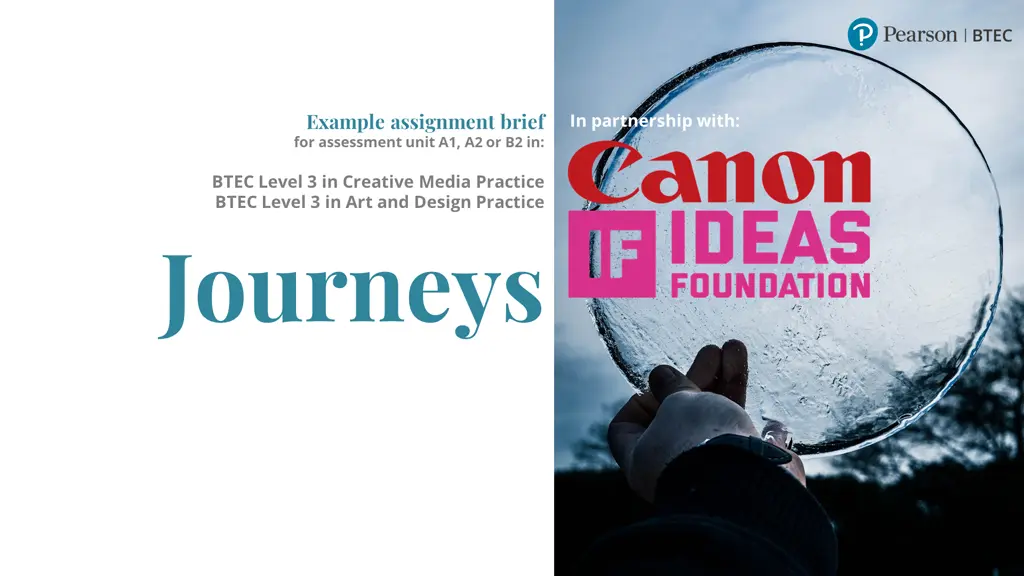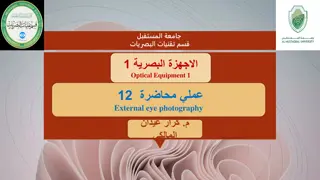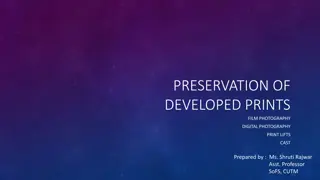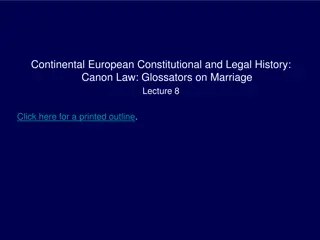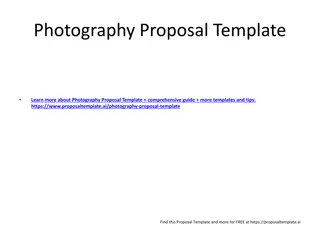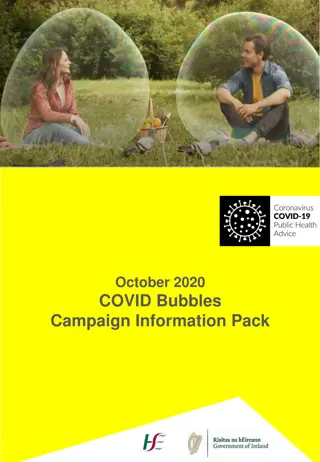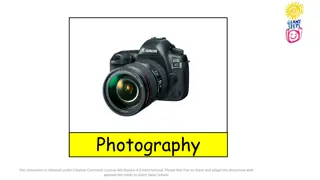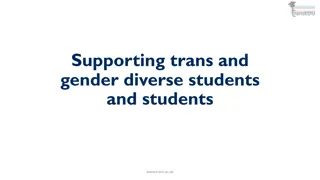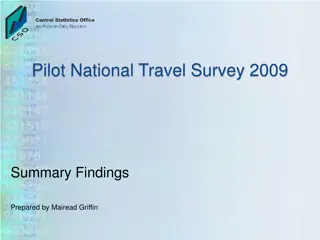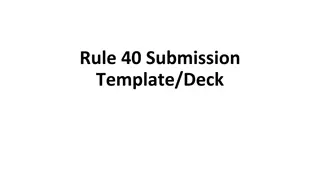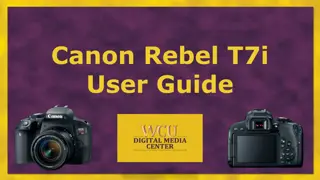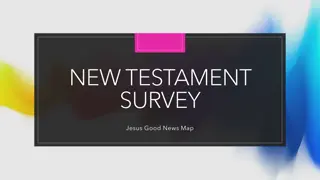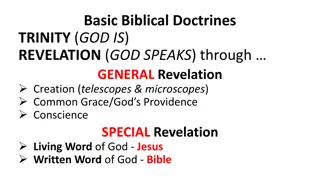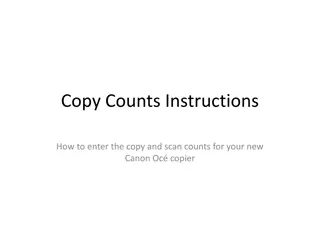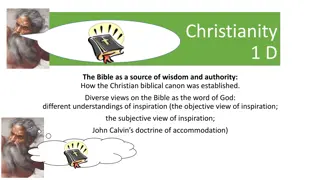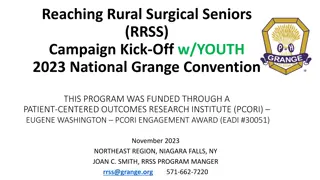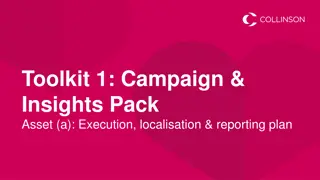Creative Canon Journeys: Photography Campaign
Join Canon's Journeys campaign with art, design, or media work reflecting photography creatively to engage the 15-25 age group. Explore various outcomes such as animations, websites, fashion garments, and more. Deadline for submission specified.
Download Presentation

Please find below an Image/Link to download the presentation.
The content on the website is provided AS IS for your information and personal use only. It may not be sold, licensed, or shared on other websites without obtaining consent from the author. Download presentation by click this link. If you encounter any issues during the download, it is possible that the publisher has removed the file from their server.
E N D
Presentation Transcript
Example assignment brief for assessment unit A1, A2 or B2 in: In partnership with: BTEC Level 3 in Creative Media Practice BTEC Level 3 in Art and Design Practice Journeys
Journeys Guidance for teachers on using example assignment briefs (delete slide prior to handing out to learners) While this assignment can be used for delivery within assessment unit A1, A2 or B2, learners must undertake different assignments for each assessment unit. The expectations in each assessment unit will also be different, for example: Example Assignment Briefs (EABs) are provided for use and guidance. They have been developed to provide realistic vocational scenarios as client briefs. The content demonstrates how briefs can be used for assignments for all or part of assessment units. A1: the assignment would most likely be used to form part of the evidence for the unit, combined with evidence from other assignments. A2: as a unit dedicated to undertaking a focused creative project in response to an assignment brief, more time would be expected to be spent exploring different ideas, developing work and presenting outcomes to meet the brief. B2: the response itself is likely to be more extensive and fully resolved given the time allocated to the development of work towards the assignment and the depth of content being assessed through this unit EABs can be adapted in any way to meet the needs of your learners and programme, however they must maintain the required features of an assignment for a BTEC qualification. Please see the Delivery Guide for this qualification for more information on setting and adapting assignments. You should ensure the following sections of this assignment brief are appropriate for your programme and learners, and adapt as necessary e.g.: Requirements: to indicate the types of media and outcomes. Requirements detail: to indicate the specific requirements for focused programmes, i.e. if the programme is fashion or games orientated, it would be advisable to set narrower outcome requirements. Inspiration: to use examples of sources relevant to the programme. Guidance: to indicate the specific expectations of how learners will develop and submit work. Additional deadlines can be included for different tasks within the assignment if needed.
Client Canon Journeys Context Canon has launched a new campaign called Journeys . This is to emphasise how photography can be used creatively on its own or in combination with other art, design or media. Requirements Work in art, design or media that reflects the campaign Journeys . The work must clearly include photography to reflect the company. Brief Audience The primary target audience is for young people from the ages of 15-25. The aim is to encourage young people to form a brand allegiance to Canon equipment and services. Deadline To be completed by assessor. Resubmission deadline To be completed by assessor. Assessor To be completed by assessor.
Journeys Canon Journeys campaign Requirements detail: The outcomes should relate clearly to the campaign Journeys , but can be created in any art, design or media as long as it clearly incorporates photography. The following are suggestions from Canon, but the list is not exhaustive or exclusive: Photographic narrative, animation or moving image adverts Stand alone website, app or interactive media Garment or fabrics that include photographic media Fashion or styling photographs of garments as posters Interiors for Canon stores that include photographs Published media such as stand alone magazine or insert Series of publicity posters Print or illustration posters that include photography Packaging for Canon cameras Display stands for visual merchandising 3D artwork for stores that incorporate photography. Note: you should agree your plans with your tutor to ensure they meet the assessment criteria before you begin working.
Journeys Client background Value - We want to help people realise the power of imaging and information, and everything we do is designed to inspire and encourage people to confidently explore and embrace their vision. The Kyosei philosophy - Our corporate philosophy, Kyosei, is a Japanese concept that means living and working together for the common good. It brings to life our commitment to sustainability, how we work together, and our desire to create an environment for everyone to thrive and grow. Focus - As the world s leading imaging brand, we re committed to driving advanced technologies and celebrating innovation.
Journeys Inspiration: These are purely starting points to provide some inspiration for the Journeys campaign and are not the expectation of outcomes: Maps Geographical information Migration routes Personal travel and objects Charts and diagrams Movement Dance, fitness and support Ageing and rights of passage Transport and machines Bags, tags, tickets Travel equipment
Guidance overview Journeys You will need to plan and organise your project individually as part of your professional practice and problem solving. AC1: Informing ideas Use skills for informing ideas, interpreting the brief and developing ideas and outcomes as they progress. AC5: Communication Show skills in communicating the meaning, purpose and function of work, including development, outcomes and presentation, in order to engage the audience. The assessment criteria are not a series of tasks that are completed independently. You will use a combination of skills relating to the criteria continuously throughout the assignment. Communication Informing ideas AC2: Problem solving Show problem solving throughout by engaging with the brief and its requirements including ideas generation, experimentation, testing and reflection on the meaning, purpose function of your work. AC4: Professional practice Show how you apply professionalism to your assignment through technical practice, project management and working safely. Professional practice Problem solving They criteria are equally weighted, meaning they should be given equal importance in your project. Technical skills The guidance slides of this assignment brief indicate how you could approach each of those skills and what types of evidence you could produce. AC3: Technical skill Show technical skills throughout by exploiting the potential of media, materials, techniques and processes. In early stages of the project, this might be when investigating material opportunities. Later it would be in the outcomes or their presentation.
Journeys Informing ideas You should inform you ideas at all stages of the assignment. The Journeys campaign offers a wide potential of starting points such as: Personal or collective journeys Actual or emotional journeys Journeys over time or place Overcoming adversity, development or changes in society Guidance Primary and secondary methods for informing ideas: Interpret the brief client, audience, requirements, purpose Explore the work of practitioners related to journeys Explore photographic work related to journeys Explore the potential of a variety of media in relation to your outcome Make observations and records of journeys Use of research to inform development, outcomes and presentation to improve and refine work and ideas Evidence could include: Initial intentions presentation - informed by research, explaining how it will meet the brief Blog, digital portfolio and/or sketchbook of iterative use of research to inform ideas for development, outcomes and presentation
Journeys Problem solving You should use problem solving at all stages of your work by testing, reviewing and reflecting on progress of: Interpreting the brief, client, audience, requirements, purpose Generating initial ideas Experimentation Applying stages of the creative process in order to develop and refine Testing and feedback Guidance Evidence could include: Blog, digital portfolio, sketchbook and/or showreel documenting: Treatment or pitch Stages of development and refinement Outcomes of testing and/or feedback Critical review and reflection
Journeys Technical skills You should use the most appropriate and effective technical skills throughout your project: Development of work: trying different techniques and seeing what is the most useful exploring the properties of media and making comparisons taking work through a series of different processes to compare outcomes. Production of outcomes Guidance Evidence could include: Blog, digital portfolio and/or sketchbook with: Initial intentions presentation with early draft work and practical research into media Series of prototypes Outcome presentation
Journeys Professional practice You should apply professional practice when working on the assignment by: Identifying and using best practice associated with the type of work you are creating: consider and test what others do in industry keep things safe and manage risks. Applying project management: breaking up the assignment into manageable parts exploring ways of working efficiently. Setting actions and targets for meeting the brief: creating a proposal or plan organising resources Exploiting stages of the creative process. Guidance Evidence could include: Blog, digital portfolio and/or sketchbook with: Presentation of plan for project Submission on time of an organised portfolio Outcome(s) that show an understanding of related professional practices
Journeys Communication You should use communication skills throughout the project by: Considering the client and audience needs Working to ensure the meaning, message and impact are clear Using visual language and creative forms of communication Guidance Communication opportunities: Expressing clear intentions at an early stage by aligning work with the audience and purpose of the brief Using testing and review to reflect on the quality of how the work communicates Producing prototypes and outcomes that clearly communicate the needs of the brief Working with others and presenting intentions Evidence could include: Blog, digital portfolio and/or sketchbook with: Initial intentions presentation personal communication Series of prototypes that communicate ideas Reflection on stages of development with explanation of choices in relation to assignment Outcome(s) presented in relation to audience and related industry conventions
